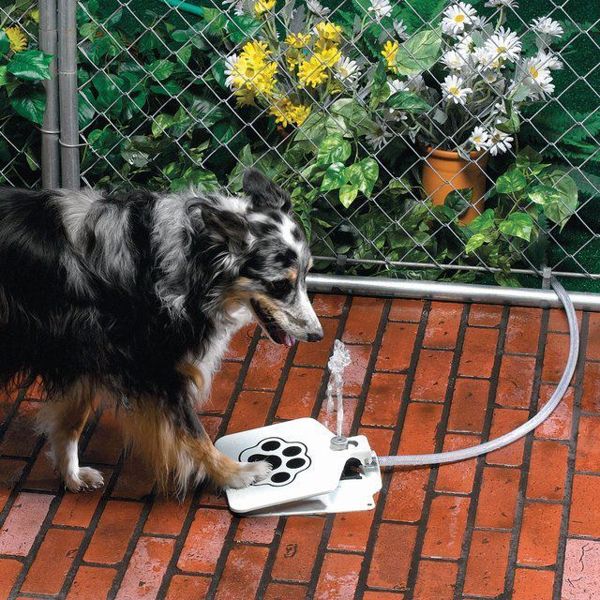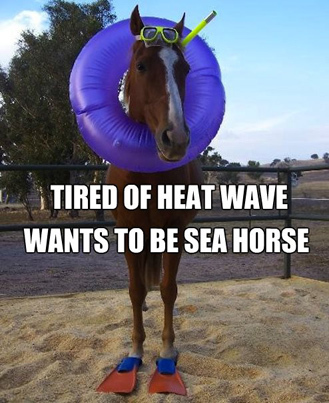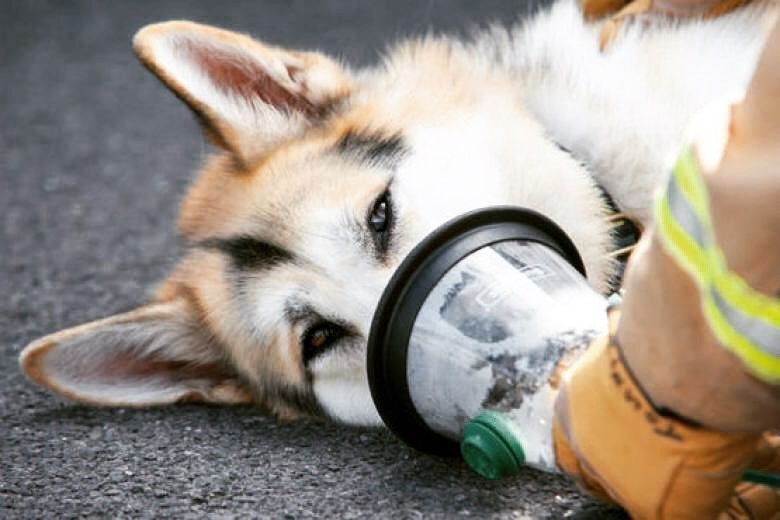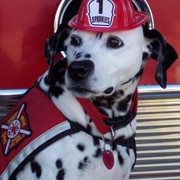As the mercury and heat indices continue to rise, please don’t forget about critters both large and small. Heat stroke can occur when a pet's temperature reaches above 105 degrees Fahrenheit. At this temperature the body's immune system begins to go haywire and their organs and blood begin to malfunction.
Death can quickly occur without lowering their temperature and correcting any other problems that can arise.

Remember to keep lots of fresh water available throughout the day for pets of all shapes and sizes and exercise your pet in the cool of the early morning or evening since hot asphalt or pavement can burn their paws.
And realize animals with light-colored fur are particularly vulnerable to sunburn and skin cancer so provide access to shady spots in yards or at least get a doghouse or shelter.
And NEVER leave your pet in the car on warm days. The temperature inside a car can rise very quickly to dangerous levels, even on milder days.
Pets can succumb to heatstroke very easily and must be treated very quickly to give them the best chance of survival.
Some warning signs of overheating / heatstroke in pets include…
- excessive panting or difficulty breathing
- increased heart and respiratory rate, drooling
- mild weakness, stupor or even collapse
- seizures
- bloody diarrhea and vomiting
- as things begin to get worse you may notice small areas of bleeding under the skin in the mouth, ears and the whites of the eyes.
Another thing to be aware of is animals with flat faces, like Pugs and Persian cats, are more susceptible to heat stroke since they cannot pant as effectively.
If a pet has symptoms of heat stroke:
-- If you cannot immediately get your pet to a veterinarian, move it to a shaded area and out of direct sunlight.
-- Place a cool or cold, wet towel around its neck and head (do not cover your pet's eyes, nose or mouth).
-- Remove the towel, wring it out, and rewet it and rewrap it every few minutes as you cool the animal.
-- Pour or use a hose to keep water running over the animal's body (especially the abdomen and between the hind legs), and use your hands to massage its legs and sweep the water away as it absorbs the body heat.
-- Transport the pet to a veterinarian as soon as possible

Tips for a horse
-- Move him to shady area (or erect temporary shade over him) and spray with cool water.
-- Place an ice pack on the jugular vein to help cool blood as it circulates and/or put some cubes in a rag or sock and tie to the top of halter.
-- Offer him fresh water and put some close by to drink. Watch for signs of dehydration too (e.g. sunken eyes, panting, dark red or dry, sticky gums, etc.).
Some final notes…
-- Consider taking a pet or large animal first aid class.
-- A fun way to keep your fur-kids happy is make some pet-friendly popsicles. Fill ice cube trays with a little water and peanut butter and banana .. or moisten dry kibbles or treats, etc and freeze. (An easier way is just drop spoonfuls of treats on a tray and freeze so you don’t have to struggle to get them out of ice cube trays.)
-- Check out the various cooling mats or pads to help your critters chill out.


